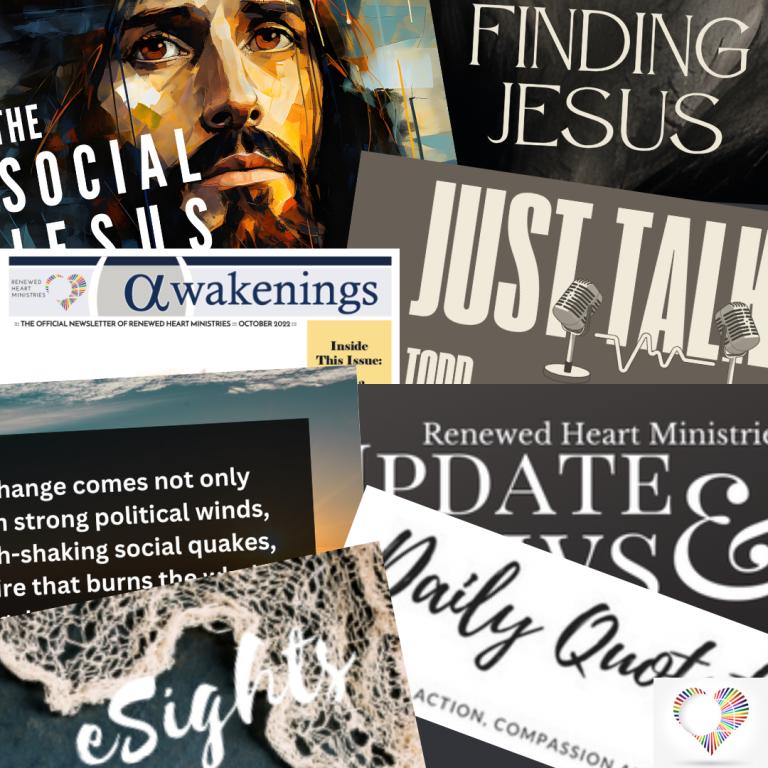
Why does this matter?
Christian theologians from multiple marginalized communities have spent years critiquing a theology that centers the good news on Jesus’ suffering rather than how life triumphed over suffering by undoing, overturning, and reversing that death. A theology that defines suffering as good news has real life negative consequences. This week I want to amplify some of these voices once again because they are worthy of our most concentrated attention.
Welcome Readers! Please subscribe to Social Jesus Here.
(Read this series from its beginning here.)
This is Part 2 of The Original Good News of Easter
Consider these observations from feminist scholars Joanne Carlson Brown and Rebecca Parker:
“It is not the acceptance of suffering that gives life; it is commitment to life that gives life. The question, moreover, is not Am I willing to suffer? but Do I desire fully to live? This distinction is subtle and, to some, specious, but in the end it makes a great difference in how people interpret and respond to suffering.” (Christianity, Patriarchy and Abuse, p.18, edited by Joanne Carlson Brown & Carole R. Bohn)
“Jesus did not choose the cross. He chose to live a life in opposition to unjust, oppressive cultures….Jesus chose integrity and faithfulness, refusing to change course because of threat.” (Christianity, Patriarchy and Abuse, p. XX; edited by Joanne Carlson Brown & Carole R. Bohn) Brown and Parker, For God So Loved the World?)
“Such a theology has devastating effects on human life. The reality is that victimization never leads to triumph. It can lead to extended pain if it is not refused or fought. It can lead to destruction of the human spirit through the death of a person’s sense of power, worth, dignity. or creativity. It can lead to actual death.” (Christianity, Patriarchy and Abuse, p. XX; edited by Joanne Carlson Brown & Carole R. Bohn)
Womanist scholar Katie G. Cannon writes similarly in the introduction to Delores S. Williams’ Sisters in the Wilderness: The Challenge of Womanist God-Talk:
“Theologians need to think seriously about the real-life consequences of redemptive suffering, God-talk that equates the acceptance of pain, misery, and abuse as the way for true believers to live as authentic Christian disciples. Those who spew such false teaching and warped preaching must cease and desist.” (Introduction)
Williams correctly states that the synoptic gospels place the emphasis of the good news on Jesus’ resurrection in triumph over the cross as a response to the powers that be seeking to silence Jesus’ teachings on the kingdom:
“Matthew, Mark and Luke suggest that Jesus did not come to redeem humans by showing them God’s ‘love” manifested in the death of God’s innocent child on a cross erected by cruel,
imperialistic, patriarchal power. Rather, the texts suggest that the spirit of God in Jesus
came to show humans life . . . The response to this invitation by human principalities and powers was the horrible deed the cross represents— the evil of humankind trying to kill the ministerial vision of life in relation that Jesus brought to humanity. The resurrection does not depend upon the cross for life, for the cross only represents historical evil trying to defeat good. The resurrection of Jesus and the flourishing of God’s spirit in the world as the result of resurrection represent the life of the ministerial vision gaining victory over the evil attempt to kill it.” (Sisters in the Wilderness: The Challenge of Womanist God-Talk, p. 130)
In her book Stand Your Ground: Black Bodies and the Justice of God, Kelly Brown Douglas writes of the force of the resurrection with specific emphasis on how evil is defeated in the gospels stories. We’ll pick up here in Part 3.
Are you receiving all of RHM’s free resources each week?
Begin each day being inspired toward love, compassion, justice and action. Free.
Sign up at HERE.



















